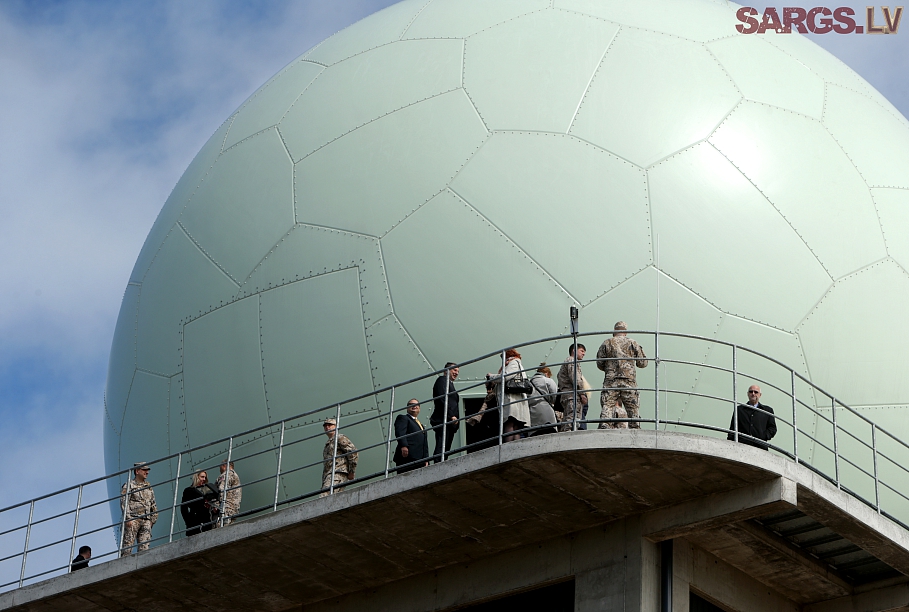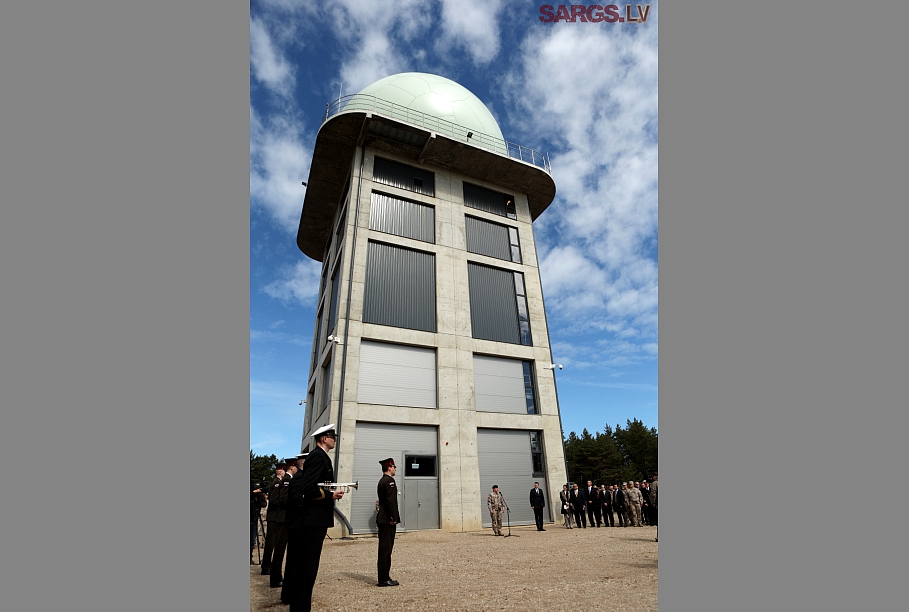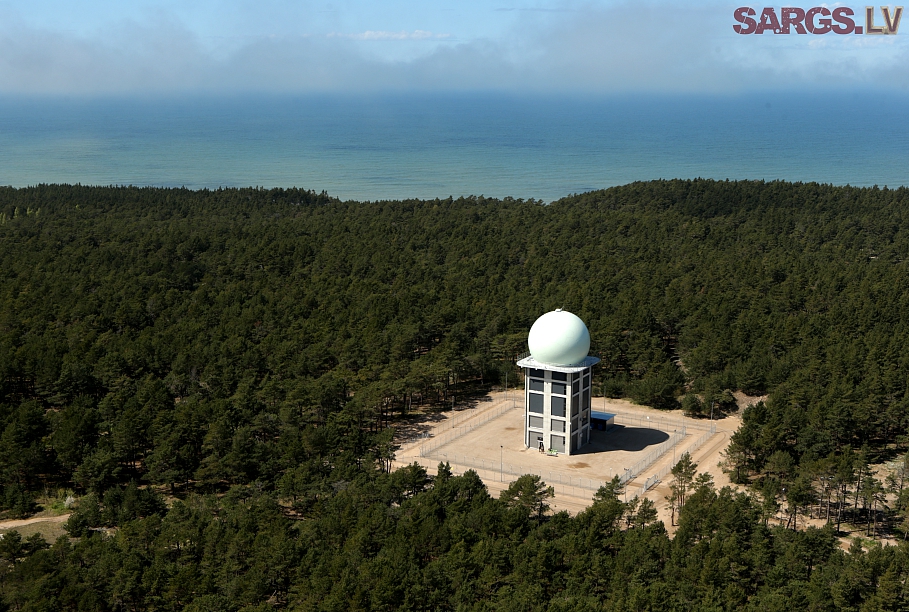
On hand to help launch the bulbous tower in the woods near the shores of the Baltic Sea were Defense Minister Raimonds Vējonis, National Armed Forces commander Lieutenant General Raimonds Graube and US Embassy acting Charge d’Affaires Sharon Hudson-Dean.
The airspace observation station is the third of its kind and will improve safety in the skies above Latvia, raising the level of security for civil aviation as well as supporting the work of search and rescue efforts and even the fight against contraband smuggling.

“This is a new level of development for our defense capabilities,” said Vējonis. “This phase will ensure identification of low and slow flying objects and air defense system development.”
On his part, NBS Commander Graube added that “this was the last link for observing the airspace in Latvia and the Baltic and it is being launched just in time, as we see that Russia’s military skirting of our airspace is notably increased in the past year.”
The tower can see around a radius of several hundred kilometers, moreover can spot aircraft flying without transponders engaged, making it an important investment for military and civil aviation safety.
Sharon Hudson-Dean pointed out the close cooperation with the US in the installation of the Čalas station, which cost over 44 million euros over a seven-year period.
The first phase of the airspace observation network was begun in 2001 jointly with Estonia, and launched in 2003. The second phase wasn’t begun until 2008, while defense budget allocations were shrunk by almost 50%. Yet the ministry strategists managed to restructure their funding internally and keep the project on track, despite costs ballooning to about 50 million euro, reports Sargs.
“I’m glad the airspace observation project wasn’t interrupted during the time of budget cuts and today we can see the results,” said the Defense Minister.
The station is a crucial link in the regional and international airspace observation networks, most importantly the BALTNET and NATINADS airspace control systems for the Baltic and NATO member states, respectively.
As if to underscore the need for better airspace monitoring capabilities, on Thursday
Air Policing jets on 14 MAY in international airspace above the Baltic Sea near LV border identified RU AF 1x ELINT Il-20.
— NBS (@Latvijas_armija) May 14, 2015
while on Wednesday the NBS reported another sighting of a Russian military plane, which prompted a scrambling and interception by pilots from the NATO Baltic Air Police squad.
Air Policing jets on 13 MAY in international airspace above the Baltic Sea near LV border identified RU AF 1x Il-76.
— NBS (@Latvijas_armija) May 13, 2015




























